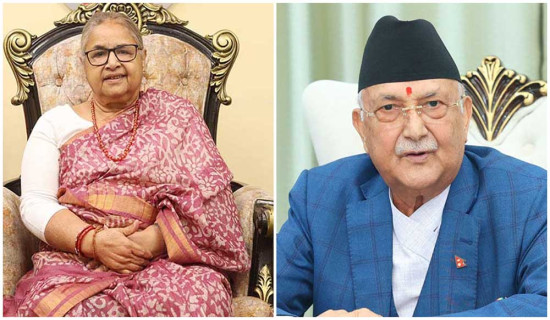- Friday, 9 January 2026
Putting People And Planet Before Profit
Investment is traditionally defined as the commitment of resources to achieve later benefits. Investment of resources could include both tangible and intangible goods. For example, investment of quality time on children apart from the financial expenditure on their education, health and other activities during their life cycle, could be expected to bear benefits which lead to their mental and physical well-being leading to economic productivity of the family and the community. If an investment involves money, then it can be defined as commitment of money to receive more money.
In today’s world, there has to be strategic planning where benefits of any investment should yield benefits for individuals and society. It is important to remember, that whatever matter is used for investments, it is basically the natural resources of the Earth that are used directly or indirectly. This has a direct impact on the future generations of living beings with depletion of earth resources with no strategy of refilling it. Be it fossil fuel, minerals, forest resources, or water among many more resources we use, we need to make sure there are plans of renewing them.
Eco-friendly projects
On April 28-29, 2024, Nepal government hosted the third Investment Summit. The focus was primarily on how to increase investment to help the country prosper and grow economically and financially in the future. Wonder if the intricacies of the impact of such investments on the population and the fragile Himalayan geology was debated to the level that is required to make sure a sustainable, eco-friendly and human-friendly projects are implemented. In the hustle and bustle of today’s wants and needs to increase wealth, the basic care economy is being neglected both within families, industries and by governments.
As the free global market is growing and the capitalist model of financial investment is thriving, the business houses are still running after endless profit instead of balanced development model that puts people and planet before the profit. This is social entrepreneurship model which focuses on setting up enterprises that cater to the need of the community. It makes profits but pumps it back to the community for its holistic development.
Nepal needs a model where there are plans of strengthening the health, education, and nutrition of people throughout the country. This could be models that foresee an education system planned for the area where the population can utilise the natural resources in their community and make sure they can grow food and generate the energy that is required for their own use and pump any surplus into the national grid for the use of the whole nation. As food insecurity is increasing globally, the education system can be designed to educate the students and farmers to utilise the latest digital services to guide them in planning how to adapt to climate change and grow products that will help ensure food security.
There are many examples where Nepali youths who are starting agricultural enterprises that help them to earn sufficiently to meet their own needs and the needs of their children. Micro-hydro power projects can help people in the community to generate energy in low cost and suffice for their energy required. Savings and credit activities managed by local community can finance such projects together with helping the people tide over emergencies. All of these activities done with honesty and commitment to develop local areas will lead towards the development of the nation and ensure mental, physical and social well-being.
The investment here could be minimal once the attempt is taken to revise the whole system. Nepal now needs leadership to start such a social revolution where the investment is focused on the people and nature to retain and grow its potentials. According to the World Bank (WB), Nepal’s economy has seen an improved growth in the first half of the fiscal year 2024 compared to the fiscal year 2023. The WB states that this growth has been supported by the services sector, helping its economic growth rebound from a low of 1.9 per cent in 2023 to a forecast of 3.3 per cent in 2024. Accommodation and food services led the way, fuelled by a significant rise in tourist arrivals.
Decline in poverty
The report states that in agriculture there was an increase in paddy production, aided by improved seed availability and favourable weather conditions. It mentions that Nepal’s poverty rate fell due to migration and remittances alongside consumption increases. Nepal Living Standard Survey 2022/2023 mentions that a large decline in poverty from 25 per cent to just 3.6 per cent between 2011 and 2023, using the national poverty line. The report mentions that during that period the prosperity gap and inequality also reduced. However, challenges remain with a weak labour market and limited social assistance, posing risks amid economic and climate shocks.
The recently concluded Investment Summit invited hundreds of business leaders from all over the world. The conferences focused on how India and China among other countries can increase their investment in Nepal. However, with the positive economic indicators mentioned above, the government should now capitalise on the human and natural resources we already have and invest in them to make our future a move towards social entrepreneurship where the focus is on people, planet, and profit.
(Sharma is a senior journalist and women's rights advocate. namrata1964@yahoo.com. Twitter handle: @NamrataSharmaP)
















